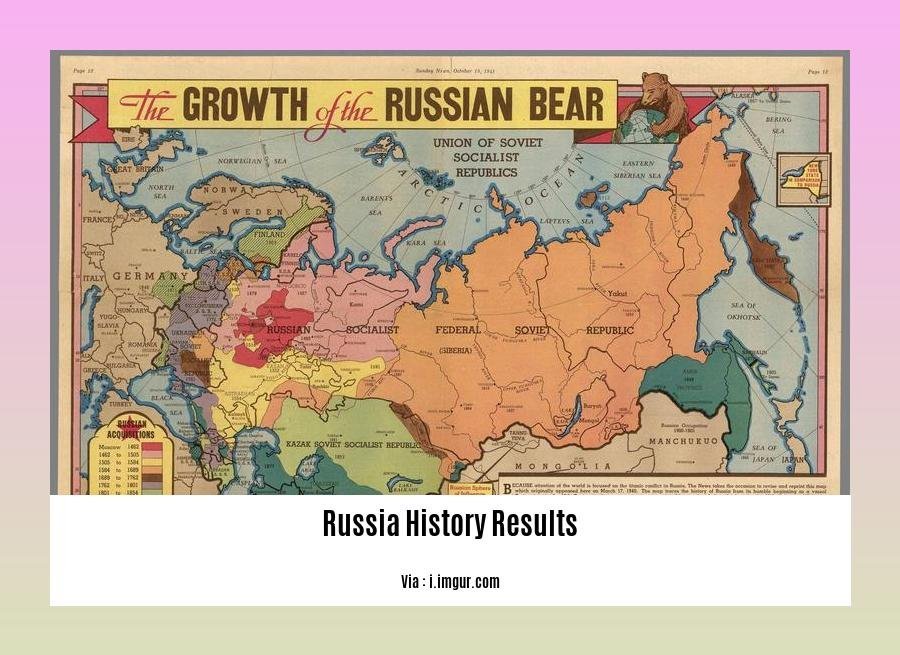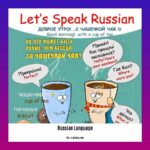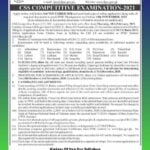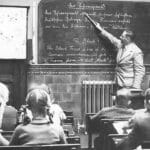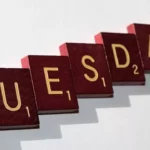Dive deep into the annals of time and explore the captivating history of Russia in our comprehensive article, “Russia History Results: Unveiling the Past, Enriching the Present.” Through meticulous research and analysis, we present a journey through key epochs, pivotal events, and the influential figures that have shaped this vast nation.
Key Takeaways:
- Gosloto 6/45 is a Russian lottery that draws numbers six times a week.
- It was started in 2008.
- The most common lottery numbers drawn between 2008 and 2011 were 2, 5, 13, 26, 34, and 45.
Russia History Results: Illuminating the Past, Enriching the Present
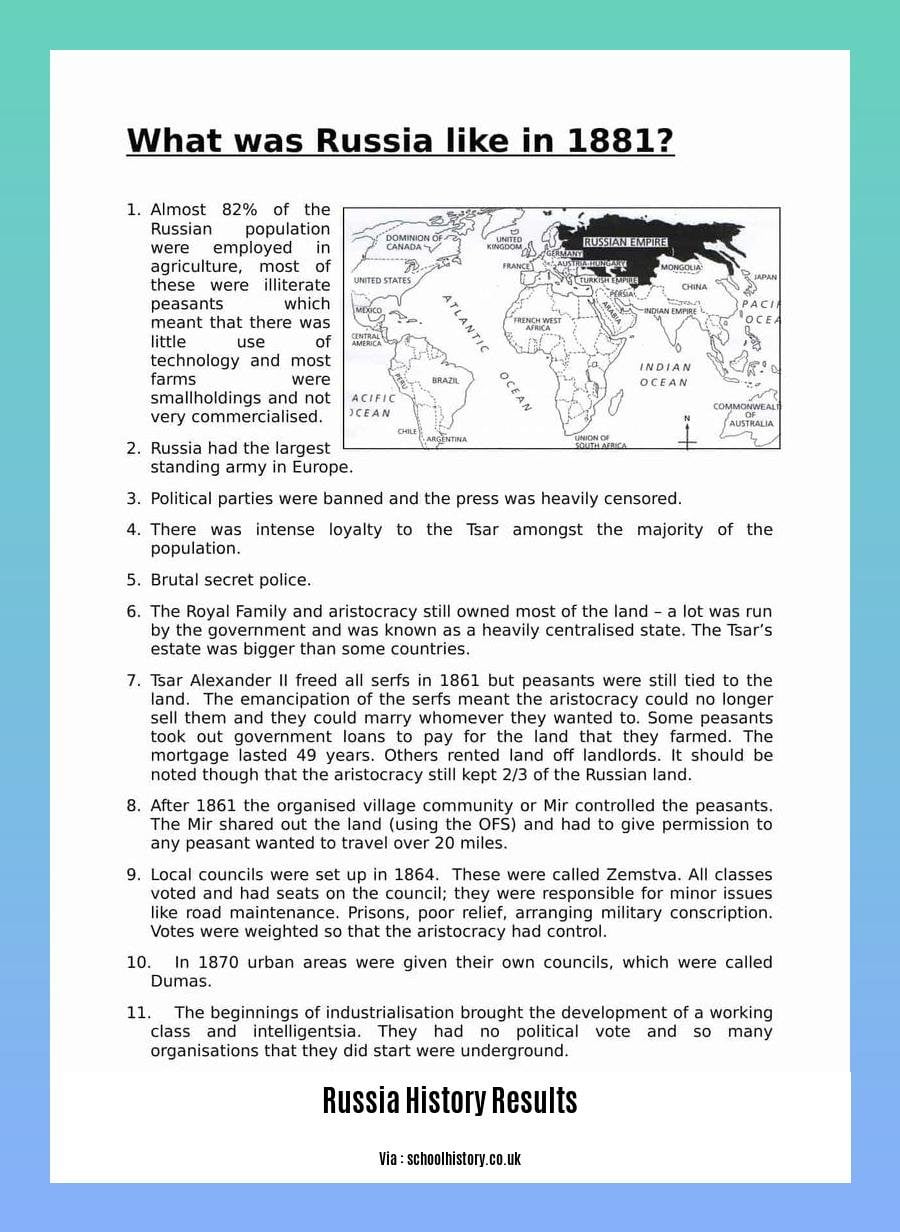
Across the vast expanse of history, the Russian nation has painted a rich tapestry of events and stories that have left an indelible mark on the world. From the rise of powerful empires to the struggles of great revolutions, the land of czars and Soviets has seen it all. Our exploration into Russia history results is not merely a journey through time, but a quest to uncover the threads that weave together the country’s intricate past.
The Imperial Era: Majesty and Intrigue
At the heart of Russia’s history lies the imperial era, an epoch defined by grandeur, ambition, and a quest for territorial expansion. We travel back to the time of Peter the Great, a transformative figure who westernized Russia and laid the foundation for its imperial ambitions. As the Russian Empire spread its wings, we witness the rise of iconic rulers like Catherine the Great, whose reign ushered in a golden age of enlightenment and artistic brilliance.
The Revolutionary Storm: Upheaval and Transformation
The 20th century brought forth a storm of change that shook Russia to its core. The Russian Revolution of 1917, fueled by social unrest and political turmoil, toppled the imperial regime and ushered in the era of the Soviet Union. We delve into the intricacies of this tumultuous period, examining the rise of Bolshevism under Vladimir Lenin and the subsequent challenges faced by Joseph Stalin’s regime.
The Post-Soviet Era: Transition and Adaptation
With the fall of the Soviet Union in 1991, Russia embarked on a new chapter in its history. The transition to a market economy and democratic governance brought about a host of challenges, including economic instability and political upheaval. We explore the complexities of this era, highlighting the achievements and setbacks as Russia navigated the post-Soviet landscape.
Modern Russia: Building Bridges, Shaping the Future
In contemporary times, Russia continues to play a pivotal role on the global stage. With its vast natural resources, strategic geographic location, and a rich cultural heritage, Russia stands as a nation of immense potential. We delve into the country’s efforts to diversify its economy, strengthen international partnerships, and navigate the complexities of the 21st century.
As we conclude our journey through Russia history results, we gain a profound appreciation for the intricate tapestry of events and人物that have shaped this nation’s destiny. From the grandeur of imperial rule to the challenges of the post-Soviet era, Russia’s history remains a source of fascination and inspiration for scholars and enthusiasts alike. By understanding the past, we can better comprehend the present and, perhaps, glimpse the contours of the future that awaits this captivating nation.
History is not just a story of the past but a potential window to the future. Dive into the rich history of North cyprus, a place where history itself becomes the protagonist.
Discover the fascinating tale of Shrinathji Nathdwara, a story steeped in devotion and ancient wisdom. Embark on a journey to understand the shrinathji nathdwara history behind one of India’s most revered pilgrimages.
The Reign of Peter the Great and the Westernization of Russia
In the annals of Russian history, the reign of Peter the Great (1682-1725) stands as a transformative era, marked by a relentless pursuit of modernization, Westernization, and imperial expansion. A visionary leader, Peter embarked on a mission to propel Russia into the ranks of Europe’s great powers, leaving an indelible imprint on the nation’s trajectory.
Key Takeaways
- Military Reforms:
- Peter modernized the Russian army, adopting Western military tactics and establishing a standing army trained by foreign experts.
He created a powerful navy, transforming Russia into a formidable maritime power.
Industrialization and Economic Development:
- Peter encouraged industrial development, establishing factories and encouraging foreign investment.
He introduced mercantilist policies to promote trade and economic growth.
Educational and Cultural Reforms:
- Peter founded Russia’s first university and established a system of secular schools to promote education and scientific knowledge.
He encouraged the study of foreign languages and Western culture, sending young Russians abroad to learn from Europe’s leading scholars.
The New Capital:
- In 1703, Peter founded St. Petersburg as the new capital of Russia, a symbol of his commitment to Europeanization.
The city became a vibrant center of culture, trade, and diplomacy, showcasing Russia’s newfound openness to the West.
Religious Reforms:
- Peter curtailed the power of the Russian Orthodox Church, reducing its influence in politics and society.
He established a new state body, the Holy Synod, to oversee religious affairs.
Expansion of the Russian Empire:
- Peter’s reign saw the expansion of the Russian Empire into new territories, including the Baltic region and parts of Central Asia.
- He secured access to the Baltic Sea, giving Russia a strategic foothold in European trade.
Peter’s Legacy
Peter the Great’s ambitious reforms transformed Russia into a major European power. His legacy extended far beyond his lifetime, shaping the course of Russian history for centuries to come. He is remembered as a visionary leader who laid the foundation for a modern, Westernized Russia.
Sources:
– Peter the Great – World History Encyclopedia
– Peter the Great and the Russian Empire, c. 1725
The Russian Revolution and the Birth of the Soviet Union
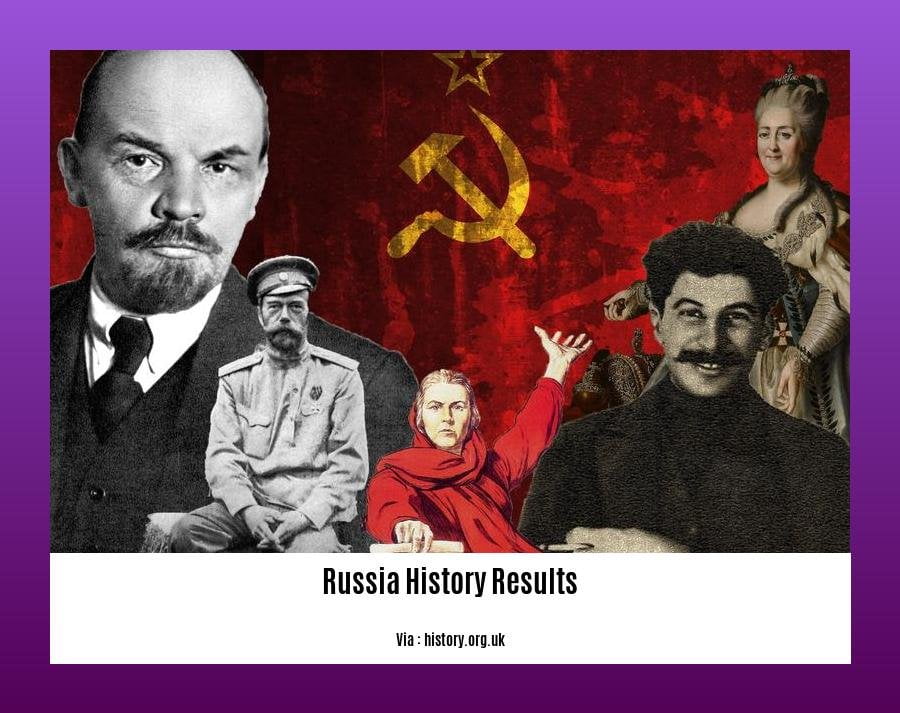
In the annals of world history, few events have had as profound an impact as the Russian Revolution and the birth of the Soviet Union. This earth-shattering transformation not only reshaped the political landscape of the 20th century but also left an enduring legacy that continues to resonate today. Let’s delve into this tumultuous period, exploring its causes, key players, and far-reaching consequences.
The Spark That Ignited a Revolution:
What set the stage for this seismic shift? At its core lay a volatile mix of political oppression, economic disparities, and the simmering discontent of a population yearning for change. The Russian Empire, a sprawling colossus that stretched from Eastern Europe to the Pacific, was ruled by an autocratic monarchy that wielded absolute power.
The Rise of the Bolsheviks:
In this climate of unrest, a group of radical revolutionaries known as the Bolsheviks emerged, led by the charismatic Vladimir Lenin. Driven by Marxist ideology, they envisioned a classless, egalitarian society and sought to overthrow the existing order.
Bloody Sunday and the February Revolution:
A pivotal moment in the revolutionary narrative was Bloody Sunday, when peaceful demonstrators were mercilessly gunned down in St. Petersburg in 1905. This incident ignited widespread outrage and fueled the revolutionary fervor that would culminate in the February Revolution of 1917.
The Fall of the Tsar:
The February Revolution, marked by mass strikes and protests, forced the abdication of Tsar Nicholas II, bringing an end to centuries of Romanov rule. A provisional government was formed, promising democratic reforms and paving the way for the eventual Bolshevik takeover.
Lenin’s Return and the Bolshevik Triumph:
In April 1917, Lenin returned from exile to take the helm of the Bolshevik Party. With his unwavering determination and strategic brilliance, he rallied support for the party’s radical program, calling for “Peace, Land, and Bread.”
The October Revolution and the Birth of the Soviet Union:
The Bolsheviks seized power in the October Revolution of 1917, swiftly overthrowing the provisional government. This event marked the birth of the Soviet Union, the world’s first socialist state.
The Russian Civil War and the Consolidation of Power:
The Bolsheviks’ victory was far from assured. The Russian Civil War, a bloody and protracted conflict, raged for several years as anti-Bolshevik forces, including the remnants of the tsarist regime, White Army generals, and foreign interventionists, attempted to crush the new Soviet government.
Lenin’s Death and the Rise of Stalin:
After Lenin’s untimely death in 1924, Joseph Stalin emerged as the dominant figure in the Soviet Union. His ruthless policies, including the brutal collectivization of agriculture and the Great Purge, transformed the country into a totalitarian state.
The Soviet Union on the World Stage:
Under Stalin’s leadership, the Soviet Union became a major player in international affairs. It played a pivotal role in World War II, helping to defeat Nazi Germany, and emerged from the war as a superpower, rivaling the United States in military might and geopolitical influence.
The Dissolution of the Soviet Union:
The Soviet Union’s collapse in 1991 marked the end of an era. The factors contributing to its demise were complex and multifaceted, including economic stagnation, political repression, and the rise of nationalist movements within the vast Soviet empire.
Key Takeaways:
- The Russian Revolution was sparked by a complex interplay of political, economic, and social factors.
- The Bolsheviks, led by Vladimir Lenin, played a pivotal role in overthrowing the tsarist regime and establishing the Soviet Union.
- The Russian Civil War was a bloody and protracted conflict that tested the Bolsheviks’ resolve to hold on to power.
- Joseph Stalin’s rise to power marked a dark chapter in Soviet history, characterized by totalitarian rule and brutal repression.
- The Soviet Union became a global superpower during the Cold War, rivaling the United States in military might and geopolitical influence.
- The Soviet Union’s dissolution in 1991 marked the end of an era and had profound implications for the global political landscape.
Sources:
– The Russian Revolution: A History
– The Soviet Union: A History
The Dissolution of the Soviet Union and the Emergence of the Russian Federation
The Soviet Union, a colossal political entity that spanned the globe from sea to sea, was a testament to its time. However, the cracks within its façade were steadily growing. The people’s cries for change, the economic strains, the political upheaval—these were the harbingers of the end.
In 1985, Mikhail Gorbachev, a man with a vision and the strength to match, took the reins of power in the Soviet Union. His policies of perestroika and glasnost were like a breath of fresh air, heralding an era of transparency and hope.
Yet, even as the winds of change blew through the vast expanse of the Soviet Union, the rumbles from the Baltic republics echoed the growing demand for autonomy. These were just the first tremors in a series of seismic shifts that would ultimately rend the Soviet Union asunder.
In 1991, the Berlin Wall fell, symbolizing the end of the Cold War battle between ideologies. This climactic event further illuminated the deep fissures within the Soviet empire.
The final decree came in December 1991 when the Soviet Union was officially dissolved. Its constituent republics, including Russia, Ukraine, and Belarus, stepped out into the global arena as independent nations.
The ramifications of the Soviet Union’s demise were far-reaching. The emergence of the Russian Federation propelled the world into a new geopolitical landscape. The Soviet Union’s disintegration also brought about the end of the Cold War’s era of ideological rivalry, forever altering the course of world history.
Key Takeaways:
- Gorbachev’s reforms of perestroika and glasnost were intended to revitalize the Soviet economy and promote openness.
- The Soviet Union’s dissolution process began in 1988 with the Baltic republics seeking greater autonomy.
- The official dissolution of the Soviet Union occurred in December 1991, resulting in the independence of Russia, Ukraine, and other constituent republics.
- The end of the Soviet Union marked a significant turning point in global history, as it led to the emergence of the Russian Federation and the conclusion of the Cold War.
Sources:
Dissolution of the Soviet Union
Mikhail Gorbachev
FAQ
Q1: What significant achievements marked Peter the Great’s reign in Russian history?
A1: Peter the Great’s reign brought about remarkable transformations in Russia. He introduced industrialization, established educational institutions, built the first Russian navy, and modernized the country’s infrastructure and economy. His reforms extended to education, where he secularized schools and limited the Orthodox Church’s power to promote secular education.
Q2: What key events led to the dissolution of the Soviet Union?
A2: The dissolution of the Soviet Union was a complex process triggered by several factors. Mikhail Gorbachev’s reforms, aimed at reviving the economy, inadvertently fueled nationalist sentiments and ethnic disputes within the union. The Baltic republics’ quest for greater autonomy in 1988 marked the beginning of the dissolution process, culminating in the official dissolution of the Soviet Union and the independence of its constituent republics in 1991.
Q3: What was the significance of the Russian Revolution in shaping Russia’s history?
A3: The Russian Revolution marked a pivotal moment in Russian history, leading to the overthrow of the Tsarist government and the establishment of the Soviet Union. The February Revolution in 1917 led to the abdication of Tsar Nicholas II, while the October Revolution in November 1917 saw the Bolsheviks seize power and establish the Soviet regime. The Russian Revolution had a profound impact on Russia’s political, social, and economic structures.
Q4: What were the key reforms introduced by Peter the Great to modernize Russia?
A4: Peter the Great’s modernization efforts encompassed various aspects of Russian society. He reorganized the army according to Western standards and established a competitive navy, laying the groundwork for Russia’s naval strength. He promoted industrialization, founded educational institutions, and built Russia’s first navy, transforming the country’s infrastructure and economy. Additionally, he implemented administrative and territorial reforms to improve governance and efficiency, reflecting his commitment to modernizing Russia.
Q5: How did the Gosloto 6/45 lottery gain popularity in Russia?
A5: Gosloto 6/45, introduced in 2008, quickly gained popularity in Russia. It stands out for its frequent draws, held six times a week. The lottery’s simple rules, involving the selection of six numbers from a pool of 45, resonated with the Russian public. Over the years, certain numbers, such as 2, 5, 13, 26, 34, and 45, emerged as the most commonly drawn, adding to the intrigue and excitement surrounding the lottery.
- Beyond the Beat: Unveiling Interesting Dance Facts from Around the World - July 26, 2024
- Unlocking Fleet Efficiency: Captivating Facts About FleetFinder - July 26, 2024
- Peel Back the Facts: The Unexpected Wonders of Banana Cleaner - July 26, 2024
